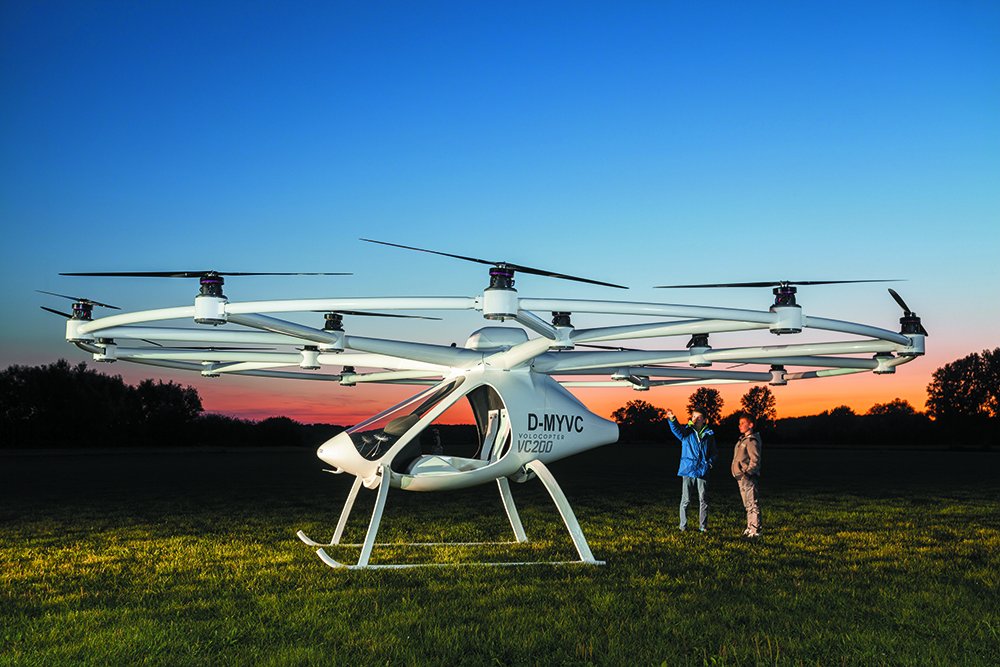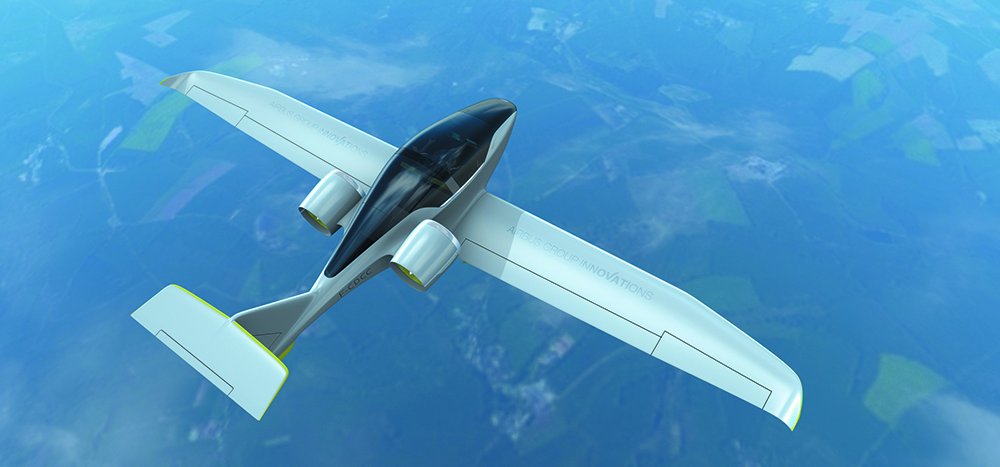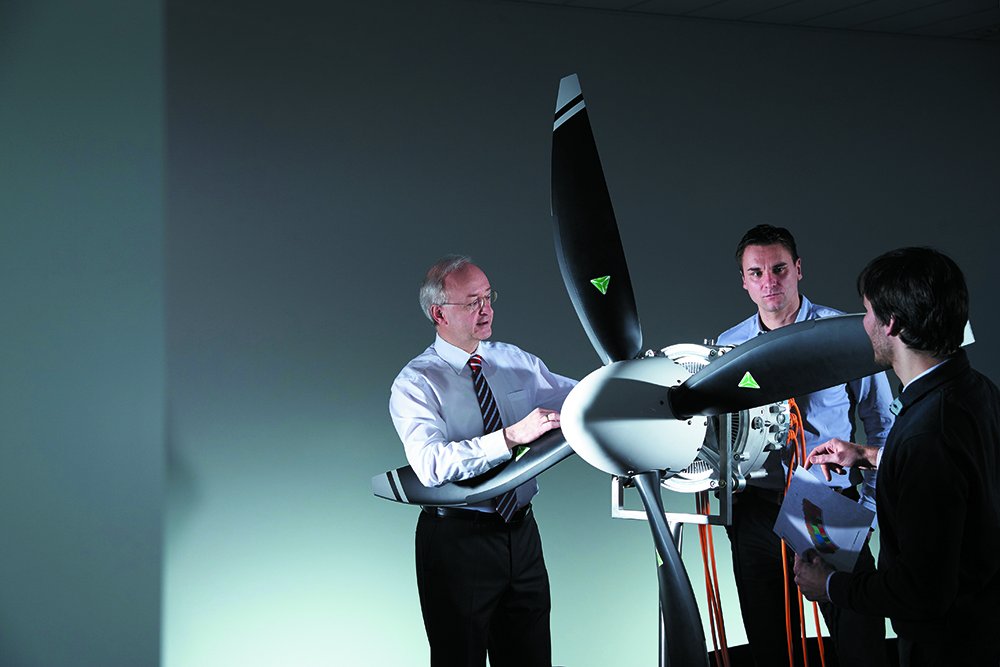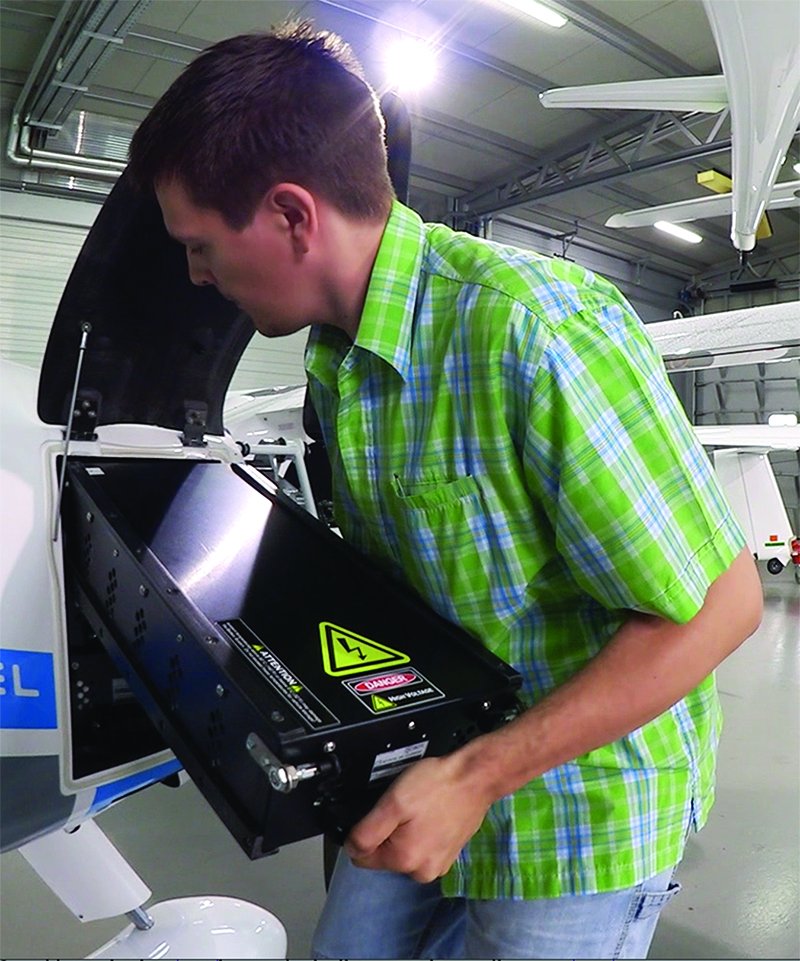In 2015, somewhere in an airless office tasked with keeping track of such things, a dot was placed on a spreadsheet graph. It represents year one of the next big thing in aviation: electric airplanes. The graph will march forward from there, rising gently into the future. Or so it is hoped.
Never mind that you can’t readily buy an electric airplane right now and you’ll have a time even finding one to fly, as I did last summer. It took a trip to Slovenia to experience the tingle of raw voltage coursing into a brushless DC motor at the touch of button.

Electrics will get bigger in 2016, but probably no more accessible. It’s not for lack of trying. Above and below the surface, there’s semi-furious developmental work to bring electric airplanes to market, driven by a mix of a parallel market push in the automotive world, a war on noise and emissions, demand for drones and the faint outlines of an energy transition away from oil and toward electricity for everything.
Yet, are any of these electric airplane proposals for real? Or are they just vanity projects with all the credibility of flying cars? In this article, we’ll examine those questions and explore the daunting challenges electric airplane manufacturers face in bringing these airplanes to market.

Several things appear certain. The electrics we’re seeing now are more certification ice breakers than products with market legs. And because limitations on battery energy density won’t significantly improve for quite some time, there’s a tilt toward serial hybrid power systems. Physics being physics, these are likely to be slower and will carry less than equivalent gasoline models, but they should cost less to operate. It’s anyone’s guess if they’ll be cheaper to buy, but unless they’re a lot cheaper, they’ll struggle to be market disruptive for the foreseeable future.
The barriers electric airplanes face to achieve market acceptance are both technical and regulatory, but everyone I spoke to for this article placed the regulatory challenge as by far the most difficult. That, combined with immature technology, means that even the most ambitious electric aircraft projects are less swing-for-the-fences and more on-base bunts.
Process, Not Product
“What’s most interesting is the process, not the determination to come up with a product. But if you never have a product, you never learn the process,” says Nicolas Chabbert of Daher, which is partnering with Airbus in the aggressive $55 million E-fan project to bring to market first a certified pure-electric trainer and then a four-place hybrid-drive aircraft before 2020. The E-Fan 2.0 trainer, which, through a subsidiary calledvVoltAir, Airbus plans to certify by next year, is aimed at the European training market. The E-fan 4.0 is a four-place trainer/personal aircraft for the North American market to be built in the U.S. and in service by 2020.

Besides VoltAir, Airbus has nine other developmental partners, including European general aviation stalwarts Daher and Diamond Aircraft and Siemens, the German electrical conglomerate. But the Airbus entry shouldn’t be viewed as a giant aerospace consortium seeking gold in general aviation, but rather a logical first step toward developing a commercial hybrid electric aircraft under a conceptual project called E-Thrust. Airbus has partnered with Rolls Royce and Siemens and set a 2050 time-frame for a marketable hybrid-electric airliner. The relatively modest E-fan project opens the path toward that development.
There are other such projects, including a serial hybrid being developed by Pipistrel Aircraft in Slovenia and Diamond Aircraft has its own hybrid project perking. Again, both are more certification proof-of-concept vehicles to give regulators grist than they are marketable products.
But will the regulators come around? They are and they will, according to GAMA’s Greg Bowles, an engineer who works in GAMA’s Brussels office. He says European regulators have committed to having rules in place by late 2016—part of the CS23 revision—that would allow the certification of electrics to begin, including hybrids. He says these new regulations are more streamlined than legacy rules, which don’t address electrics anyway.

“The good thing about the European proposal is that it doesn’t require independently certified propulsion,” Bowles says. “Today, you have to get a type certificate for the engine and then a certificate for the airframe. This would allow you to approve the propulsion with the airframe in one step.” Unfortunately, the FAA has been neither as flexible nor as timely as European regulators and lags in electric aircraft regulation development. The long-awaited FAR Part 23 revision is supposed to address this and the hope is that a draft will appear in early 2016.
Why Do This?
Rules or no rules, electric airplane development is being pushed along by broader trends in the world economy that favor decentralized or so-called distributed electric power. The wider use of electricity in everything from cars to industrial tools to medical devices is pervasive. “Distributed power” means power that’s generated at or near the point of use and for airplanes, that opens up new design possibilities.

“Where’s the practicality? What can we do with this?” says Christian Dries of Diamond Aircraft, who’s about to fly its third-generation electric airplane. “This technology will allow us to develop airplanes that are slightly different from everything we know now. For example, tilt-rotor airplanes that will have the possibility of vertical takeoff, but can also fly at very high speed,” Dries adds. Diamond’s current project, a hybrid based on the DA40 airframe with a pair of canard-mounted electric motors is a vivid example. Dries hopes the airplane will fly later this year. An even more dramatic example is the Volocopter, a complete rethinking of the helicopter by the German-based start-up e-volo GmBH. In place of a main and tail rotor, it has distributed power in the form of 18 motors mounted on a circular array. The Volocopter has flown unmanned and e-volo founder Stephan Wolf told me that it will fly manned early in 2016. The Volocopter leverages distributed electrical power to a logical maximum in that instead of complex mechanical linkages requiring skilled pilot input, the aircraft is stabilized by software controlling the motors, including the ability to automatically compensate for failed motors without action by the pilot. There’s only one problem: On a full battery charge, the Volocopter has an endurance of only 20 minutes.
Tilt Toward Hybrid
Everyone I spoke to building or considering pure electric airplanes offered some version of this observation from e-volo’s Wolf: “If you would have asked me five years ago when we started this project, I would not have said battery energy would be the bottleneck. I still wouldn’t say that now because five years ago, I thought the same thing.”

While pure electrics (EVs) can fly fine, they can’t do it for very long and this sharply limits their practicality. “People thought that airplanes would go the same way cars are going, which is EV first, then hybrid then back to EVs as batteries got cheaper,” says Embry Riddle’s Pat Anderson, who’s working on a number of electric aircraft projects at ERAU, including a research EV. “But I really think aerospace is going to play out the opposite. It will be EV followed by faster, which is going to be hybrid. If you look around, that’s what’s happening,” Anderson says.
And indeed it is. E-volo’s Wolf says they’re exploring a hybrid design, Diamond is on its second-generation hybrid and Airbus and Pipistrel are throwing serious money at serial hybrid designs of their own.
This leads to a design road fork. Hybrids can be viewed as range extenders or power boosters. The range extender concept has a small motor with a generator to supplement batteries, which are the prime mover. That’s the thinking behind PC Aero’s Elektra designs. They’re battery operated airplanes with solar panel range extenders. The power-booster hybrid has a larger hydrocarbon motor and batteries sufficient only for bursts of high power for takeoff, climb or hovering.

Diamond’s hybrid, for instance, uses an Austro diesel to drive a generator to power the two electric motors and charge the batteries, of which it has a lot: 440 pounds (200 kg) occupying the entire backseat of the airplane. That means it’s a two-place airplane, but one that will cruise at about 120 knots for up to 10 hours, burning less than 2 GPH, the company claims. Dries concedes that this design will be slower than even a diesel-powered DA40 and will carry less payload. But it might have longer endurance and lower overall operating costs, perhaps because the engine can be operated on condition, without a specific overhaul cycle. Diamond’s hybrid could also have terrific takeoff performance at any density altitude since 300 kWh can be applied to those two motors on the nose. Dries sees an additional selling point: The electric power provides a secondary power source for emergency use, something that may appeal to buyers.
Hypstair

1)]
Pipistrel is pursuing a similar strategy with its hybrid project. Although the system will fit into its yet-to-be-certified Panthera airframe, it’s intended to be a generic hybrid drive proof-of-concept for any single-engine aircraft and is being developed under an EU co-funded project called Hypstair. The architecture of this system is similar in concept to the Diamond proposal, although it has a single electric motor and a smaller gasoline hydrocarbon motor which appears to be a Rotax turbocharged 914 with 115 HP. The graphic below shows the proposed hybrid cycle. One of the system’s design points is a haptic power control and a fully integrated electronic cockpit.
This system, too, will be a certification guinea pig, but judging by the claimed performance specs, it might be competitive as a marketable aircraft. Because the Panthera will be offered as both a gasoline version and an electric hybrid, Pipistrel has published performance specs for both. The hybrid claims a 177-knot cruise speed at 15,000 feet against 198 knots for the gasoline version at 8000 feet. The two have identical range at a 155-knot cruise, but the hybrid version’s useful load is less; 915 pounds versus 1100 pounds for the gasoline version.
Sales points? Lower noise and emissions, mainly. But like the Diamond example, the Panthera hybrid could apply all of its battery power to takeoff and climb and produce impressive performance in high density altitude conditions. It similarly has the option of charged batteries as a secondary power source for emergencies. In Slovenia last June, Pipistrel’s Vid Plavik told me the hybrid version might get you from A to B on 15 percent less fuel. But none of that’s proven yet. We’ll judge them seriously when they fly.

2)]
In a project co-funded by the European Union, Pipistrel is developing a hybrid drive using a small turbocharged engine driving a generator and about 100 kg (220 pounds) of batteries in the wings. The graphic above shows the proposed hybrid cycle. The aircraft can take off on battery power alone, battery-boosted hybrid power or engine power alone. Typically, it would use engine power boosted by the batteries for maximum performance.
By the top of the climb, the batteries are depleted and the hydrocarbon engine provides both cruise power and battery recharging. The system also has recuperative charging through the propeller during descent. The chart at left shows the weight penalty against the gasoline version of the same aircraft, the Pipistrel Panthera. There’s an additional penalty: At the mid-altitudes, the hybrid model will have only about 100 HP available compared to 195 HP for the Lycoming IO-540V version. That means slower cruise and climb for the hybrid, although it regains some advantage because turbocharging allows operation at higher altitudes.
We tested Pipistrel’s Alpha Electro for our August 2015 issue. You can read the review here.
E-Fans

If any of these ideas deserve the award for rapid industrialization, it would be the Airbus E-Fan project. Its subsidiary, VoltAir, intends to have the E-Fan 2.0 electric trainer in service by next year and the E-Fan 4.0 four-place hybrid before 2020. VoltAir has already built a factory for the 2.0 in France. The 4.0 will be built in the U.S. and is intended for the North American market.
The 2.0 is similar in concept to Pipistrel’s Alpha Electro, in that it’s an EV with an hour of endurance and 30 minutes of reserve. Rather than conventional props, it has a pair of ducted fans and a novel chain-drive system to the wheels for taxiing. One executive familiar with the project told me that Airbus understands building the airplane won’t be enough. It will also have to provide training and support doctrine, maintenance and battery exchange protocol. Airbus envisions a volume market in the European training market and insists it’s serious about being in GA. In a carefully vetted answer to e-mail queries, Airbus senior VP Ken McKenzie offered this reply: “We believe the larger focus of an innovation project like the E-Fan is not necessarily to make an aircraft that’s cheaper to produce, operate and maintain than an aircraft with a combustion engine, but rather to develop innovative, eco-friendly propulsion and lightweight material solutions, with the goal of bringing them to market quickly as more stringent carbon emissions regulations come into effect.”
The Long Term
The pure electrics—EVs—put designers in a box. For the time being, they struggle to fly for an hour, which may or may not make them marketable enough to even sustain the developmental effort. The long-promised better batteries aren’t around the corner. Hybrids look a little better, but they give up performance and payload against internal combustion aircraft. Hybrids also need better, lighter batteries. The entire industry is at such early-stage development that aerodynamics haven’t caught up with power technology.

“Improving the aerodynamics is a much faster way to get improved performance than improving the specific energy of batteries, without question,” says Embry Riddle’s Pat Anderson. That means high-aspect ratio wings with long spans, low drag and light airframes. Anderson says that last item can be a problem:
“You really chase your tail on what the mission is. If you’re talking about a flight school, if you can exchange the battery packs and you have a durable airplane that’s not too light for its use, that might be a durable option. At Embry Riddle, durability is number one for us,” Anderson adds.
Research on dramatically more efficient airframes is underway, but most of it is theoretical. NASA researcher Mark Moore is we’ll known in the electric aircraft community and has been working on a project intended to reduce required propulsion energy by a factor of five. “One part of the efficiency improvement is the ability to decrease the size of the wing because the tight aero-propulsive coupling of the propulsion to the wing lets us achieve a dramatically higher maximum coefficient of lift,” Moore told me in an e-mail. “In essence, we’re able to size the wing to the high-speed cruise condition instead of the takeoff and landing condition,” he adds.
This produces some pretty weird ideas, not the least of which is the Greased Lightning research aircraft, powered by 10 electric motors. The LEAPTech project, with up to 18 motors on a single wing, will test how efficient tight integration of distributed power propulsers can actually be. While manufacturers are happy to see this research, they also groan a little at the prospect of manufacturing such complex things profitably.
EVs are unquestionably the most efficient form of electric flight, potentially offering the lowest cost per knot of speed and the fewest emissions with the least noise. Hybrids are more practical, but are also more complex, requiring a hydrocarbon engine, a generator, inverters, batteries and an electric motor. Initially, that complexity represents a tradeoff in reliability and performance against the gasoline engines that other than early adopters might not find attractive. Battery safety is also a worry, given the susceptibility of lithium ion to thermal runaway. Argonne Lab’s Jeff Chamberlain says the industry has made great strides in reducing thermal risks.
Conclusion
To answer the headline query, are these things real? The answer is that when an aerospace giant like Airbus decides to invest $55 million in little airplane development, it’s real, even if that’s coffee money for a $66 billion company. Other projects, although on a smaller scale, look just as serious.
But investing, designing and building is one thing, certifying and selling something else. The selling part is the largest unknown. When I visited Pipistrel last summer, the company said its Alpha Electro EV had generated more interest than any airplane intro in the company’s history.
I suspect Airbus will find similar initial traction for its E-fans, mainly in Europe where noise and low-emissions and efficiency drive the market. Given the cost of fuel in the U.S., I’m not convinced there’s a meaningful market for two-place electric trainers here yet because there’s not much of any market for new two-place trainers.

0)]
The Airbus E-fan 4.0 is intended as a North American product so it will presumably compete against other four-place gasoline aircraft. Given the performance it’s likely to have, my guess is it will be in the Cessna 172 space. Making it faster will require a larger hydrocarbon engine, tanking its emissions, economy and payload. Like hybrid cars, hybrid airplanes may have minimal advantages over traditional gasoline engines and that could evaporate if their hydrocarbon engines aren’t economical.
Taking Airbus at its word that it will stick to the plan and deliver, this airplane will undoubtedly be the most interesting product introduction in decades and its technology integration and sheer innovation may actually generate excitement in general aviation. But excitement isn’t always the same as sales. What Airbus will have to prove is that an electric airplane that’s more complex and with unproven technology will sell against venerable gasoline models. In a market notoriously fickle and conservative, will it be enough just that the airplanes are electric and are incrementally more efficient? And will the combination of low noise and emissions sweeten the deal for buyers? Carbon emission regulations will play a role. But these don’t yet exist in the U.S. market.
There are always early adopters, but my guess is none of these products will be disruptive for quite some time. I think they’ll trace the same general pattern that diesels did; the sales curve will rise measurably but modestly. I thought GAMA’s Greg Bowles had as good a take as any on the electric aircraft industry: “Personally, I think it’s very real. But I don’t want to ever oversell it.”


